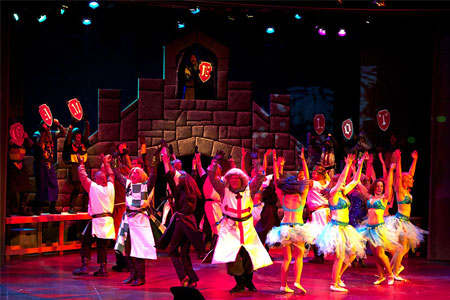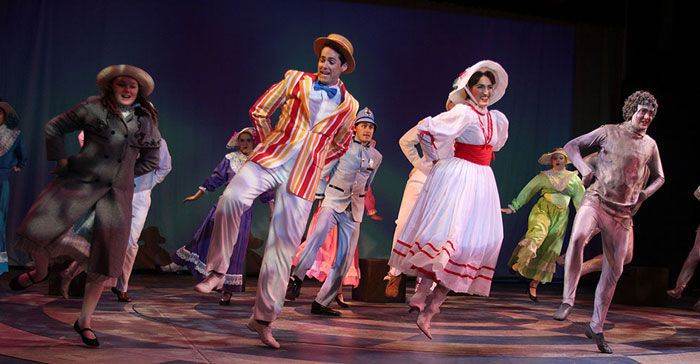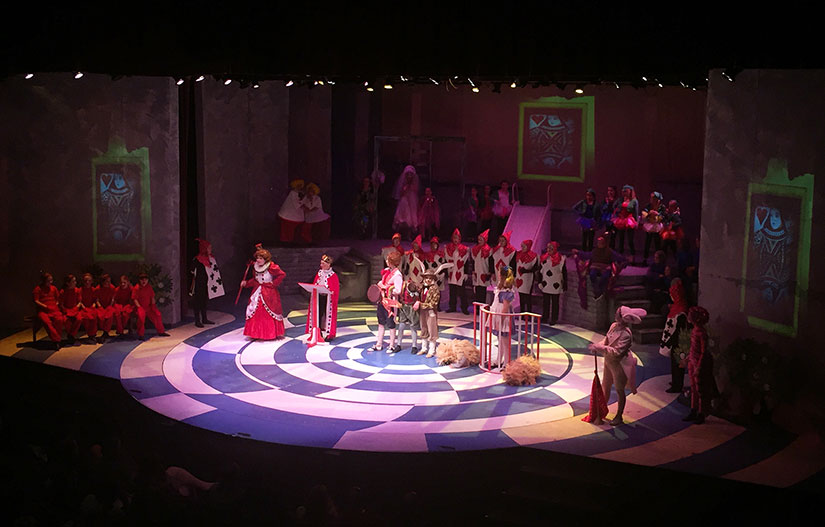Did you know?
1905 - The "bohemians” arrived in Carmel and built the Carmel Club of Arts and Crafts Clubhouse, a small private hall on Casanova Street, the site of the present-day Circle Theatre. Local poets and authors such as George Sterling and Mary Austin performed in what was the town's first theatre and cultural center.
1922 - Noted Los Angeles attorney Ted Kuster moved to Carmel and built a remarkable theatre on the southeast corner of Ocean Avenue and Monte Verde Street. He named it The Theatre of the Golden Bough. The San Francisco Examiner called it "The loveliest and best-equipped theatre of its size in America", and the Boston Transcript said, "Its architect brought to his work a freedom of imagination and true creative power."
1924 - The Carmel Club of Arts and Crafts opened a second theatre on the Monte Verde Street side of its property, keeping the small performance hall on Casanova Street for more intimate productions.
1930 - As the Great Depression gathered momentum, Kuster purchased both buildings, renaming them the Studio Theatre of the Golden Bough. He moved live performances to the new theatres and leased The Theatre of the Golden Bough on Ocean Avenue to a movie chain.
1935 - In a new lease with the movie chain, Kuster could stage one play at the theatre each month. The debut performance was By Candlelight, a comedy about mistaken identity, performed after the evening movie on May 17. Early in the morning of May 19, the Theatre of the Golden Bough on Ocean Avenue was destroyed by a mysterious fire. Kuster used the insurance money to upgrade the
Monte Verde Street theatre, renaming it The Filmarte. It became the first "art house" between Los Angeles and San Francisco - presenting both foreign films and high-quality plays.
1940 - When the Filmarte lease ended, Kuster renamed the Monte Verde facility The Golden Bough Playhouse, presenting plays, along with quality American and foreign films, year-round.
1949 - The Golden Bough Playhouse suffered a major catastrophe on May 21 when, in a dramatic coincidence, the playhouse burned to the ground following a revival of By Candlelight!
1950 - Kuster refused to admit defeat. Shortly before his 71st birthday, he created a nonprofit corporation to build a new theatre at the same site.
1952 - After attracting nearly 400 stockholders and raising $185,000, Kuster reopened The Golden Bough Playhouse with a 332-seat proscenium theatre on Monte Verde, and a 125-seat theatre-in-the-round on Casanova, presenting both movies and plays. Within a year, due to rising production costs, Kuster leased the main auditorium to United Artists Cinema and continued to produce plays
in the Circle Theatre.
1961 - Kuster died suddenly at the age of 83 while vacationing in Switzerland. His estate sold his assets to the movie chain and returned the theatre stockholders' money.
1961-72 - The Golden Bough Players' Circle leased the Circle Theatre from the movie chain until the group decided it was no longer viable to continue production of plays and musicals.
1972-92 - The Golden Bough Cinema featured first-run movies and the Circle Theatre sat unused, gathering dust and cobwebs.
1993 - With movie audiences declining, United Artists decided to sell the property for four residential lots unless someone would agree to preserve it as a theatre. Pacific Repertory Theatre - then GroveMont Theatre - jumped at the opportunity to have a home of its own.
1994 - Thanks to an outpouring of community, foundation and municipal support, $600,000 (half the purchase price) was raised to save the historical Golden Bough and Circle theatres from the wrecking ball. An important link to the past was preserved. After escrow closed on May 10, modest improvements were made to the long-neglected Golden Bough Playhouse. On September 22, the Golden Bough Theatre reopened with Gilbert and Sullivan's Mikado, followed by William Shakespeare's A Midsummer Night's Dream.
1995 - In March, Pacific Repertory Theatre opened its first full season in its new home - The Golden Bough Playhouse - with Arthur Miller's Death of a Salesman in the Golden Bough Theatre, and David Hirson's La Bete in the Circle Theatre, both under the direction of company founder, Stephen Moorer
1997 - A second phase of the initial capital campaign concluded with the successful match of a $300,000 challenge grant from the Chairman's Fund of the David and Lucile Packard Foundation. After raising this $600,000, just $275,000 remained to be paid on the mortgage.
Pacific Repertory Theatre's first years in the Golden Bough Playhouse brought accolades from drama critics and audiences alike. Under the continued artistic direction of Stephen Moorer, Pacific Repertory Theatre established itself as the premier theatre company of the Central Coast, producing both American and European classics, and challenging new works from the world stage.
The Golden Bough stage has served as a venue from many presenting community arts groups, including the Monterey Opera Association, the Monterey County Symphony, Dance Kids, Inc. and the Carmel Ballet Academy.
1999 - Pacific Repertory Theatre launched a $1.6 million campaign to pay the remaining mortgage and make improvements to the Playhouse.
2000 - Pacific Repertory Theatre paid off its mortgage on the historic Golden Bough Playhouse.
2008 - Pacific Repertory Theatre announces plans for an ambitious $5M renovation of the Golden Bough.
2011 - Pacific Repertory Theatre completed the first phase the renovation, including the addition of computerized revolving stages and state-of-the-art projection systems.
2016 - A solar power system was installed, eliminating PacRep's carbon footprint.
2018 - The Golden Bough Phase 2 campaign is announced with a $2.3M lead gift by local philanthropist Bertie Bialek Elliott.
2020 - The Golden Bough Playhouse closes due to the world-wide COVID pandemic.
2021 - PacRep started the 2nd phase renovation of the historic Golden Bough, and is set to re-open in the summer of 2024.

PacRep's production of Spamalot the Musical (2013)

PacRep's production of Mary Poppins the Musical (2016)

PacRep's SoDAonStage production of Alice in Wonderland Jr. (2016)


